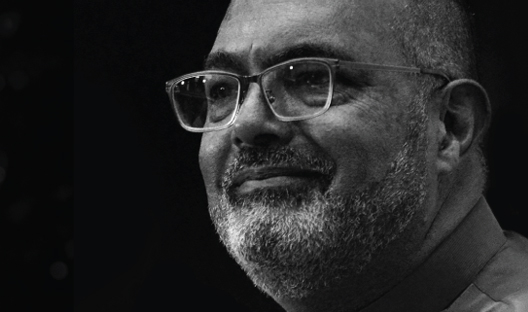The key question on restarting the economy is what the shape of the recovery curve will look like. While many are hoping for a quick bounce-back, realistically, it is likely to be a slow recovery with shifted priorities given the unprecedented environment we find ourselves in.
In fact, according to Investec, while the exact shape of recovery is uncertain, there will be no return to ‘normal’, we are likely to see some structural damage and more volatility across commodity and equity asset classes. However, there are some ‘quick wins’ to be had, we have an environment that is still supportive from a yield perspective and there are a few things we are likely to see develop as things move forward.
Monetary policy battling a healthcare crisis
“Although the lockdown was the correct reaction, it has not come without its downsides. Global GDP is expected to contract with the IMF predicting growth to be 5% lower than 2019, even if we see a strong recovery in 2021,” says Itumeleng Merafe, Head of Interest Rates and FX Structuring at Investec Corporate and Institutional Bank.
“This has led to deep shocks, both from a supply and demand side and this can be seen in jobless claims and requests in unemployment benefits. Another economic indicator has been the oil price. Since demand out of China has fundamentally dropped off since the outbreak, we have seen the Saudi Arabians break away from agreements and flood the market with oil to protect market share – resulting in a sharp decline in the oil price.
"We've seen Central Banks cut interest rates aggressively, with most interest rates in developed economies, at, or close to zero - and although this may provide some form of a shield to consumers and small businesses alike, there's only so much that a monetary policy can do to curb what is fundamentally a healthcare crisis.”

We've seen Central Banks cut interest rates aggressively and although this may provide some form of a shield to consumers and small businesses alike, there's only so much that a monetary policy can do to curb what is fundamentally a healthcare crisis.
Unprecedent action and liquidity to stimulate growth
South Africa’s worst-case scenario from Treasury is that we might see a 16% decline in GDP with up to 7 million people losing their jobs.
Looking back to the debt crisis of 2008/9 unprecedented financial measures were needed. Stimulus packages were provided, rates were cut to zero almost overnight, liquidity was introduced along with quantitative easing – allowing a central bank to buy up government debt, mitigate panic selling and allow government to raise more debt to fund operations.
“We are seeing a rehash of this,” says David Gracey, Head of FIC Trading Desk at Investec (Fixed Income, Currencies and Commodities). “The major difference is we've seen a massive shift in the quantity of the quantitative easing – which is now unlimited. And for the first time in South African history, the Reserve Bank has stepped in – cutting rates by 200 basis points and buying South African government bonds to try stimulate growth – the jury is out as to whether it will be enough, along with the R500 billion relief package.”
South Africa is in a very tight fiscal space. Introducing R500 billion worth of essentially new debt into the system could have long-term impacts and shape the country’s recovery curve.
Adds Gracey; “We have to hope that we can find buyers for that debt, shape a quick recovery and begin to pay down that debt quickly. However, given we are unlikely returning to ‘normal’ and some well-established companies that have existed for decades are not going to survive, recovery is going to be long and arduous and so predicting its curve is impossible – all we can do is introduce measures to shorten the time frame of recovery.”

Kieswetter: Covid-19 is SA’s economic wakeup call
The current crisis gives South Africa an opportunity to redress imbalances of the past and create an economy that works for everyone in society, says SARS Commissioner Edward Kieswetter.
According to Investec the support mechanisms, as provided by governments across the world, including South Africa, will likely have to be around for a long time to come. This is not a situation where the Reserve Bank will come in, buy bonds, stablise the market, and the yield curve recovers.
Stimulus measures will support the bond market and help to lower rates and while lower rates will likely be around for much longer, that does not mean we will see low rates along the yield.
“The yield curve is going to be very difficult to predict as debt issuance increases and factors that we are not ordinarily conscious of come into play,” adds Gracey. “Additionally, when we look at the currency market, it's easy to draw conclusions when one nation prints money, but what happens when every government starts printing money? There are not enough global savings to support the debt issues coming from sovereign governments, and as a consequence central banks are going to have to remain active in buying up the government debt and as a result, inflate the balance sheet, and corporate money.
"Evaluating currency levels relative to one another becomes difficult and forecasting where the rand ends up at the end of this year or even in five years’ time is a challenge. What we do know is that we will have a much higher debt to GDP ratio for much longer than originally anticipated.”
READ MORE: Could Covid-19 introduce a new era of high inflation?

We have to hope that we can find buyers for that debt [the R500 billion relief package], shape a quick recovery and begin to pay down that debt quickly. However, recovery is going to be long and arduous – all we can do is introduce measures to shorten the time frame of recovery.
Navigating Risk
As an emerging market, South Africa relies a lot on external funding and going forward, we are likely to see investors demanding higher risk premium. Does that risk premium rise over time? There are lots of moving parts and unknowns, but the markets are going to remain volatile and there will be many risks to navigate when it comes to commodities and currency.
“Currency prices have a lot to do with sentiment and global developments and considering we have been downgraded, there is a higher risk premium that has been demanded of us,” adds Gracey.
“However, you can still receive an attractive yield in SA even though we've moved down the curve as far as credit ratings are concerned – so it's not all doom and gloom. Yes, we are in sub investment grade, but we have a global environment that is supportive from a yield perspective and South Africa still offers an attractive positive net interest rate.”
Current volatility still remains a concern, given the moves we have seen over the last few weeks – with many calling the Rand a rattlesnake given how quickly it can bite back. Over the last 10 years South Africa has had a very weak domestic economy with a deteriorating sovereign balance sheet and this lack of growth and the debt trajectory that threatens to take us off the fiscal cliff is impacted the Rand.
Continues Gracey; “Ideally currency needs to be your shock absorber in the system. We have a free-floating currency, and it works well because it helps to regulate the dynamic forces in the economy. The transmission mechanism into the economy tells you very quickly where the stress levels are. Additionally, the one thing that we need is domestic stimulus and if we can ramp up on manufacturing, assuming the policy mix conducive and we all are pulling together, a slightly weaker currency is not necessarily bad for the country.”
Recovery - unknown
As we begin to reawaken the economy, many are suggesting a U shape recovery, with a protracted bottom face and a substantial time spent in negative territory.
“We don’t foresee our near future having a balance of payments crisis, but certainly we will have a local funding struggle, and we will see bond issuance going up, where domestically we may not have enough savings to fund that demand. And as a consequence, we are likely to move towards external funding,” adds Merafe.
“We will also rely heavily on global recovery because we are a commodity exporter, so we need the global economy to recover. Should we experience a second wave of infections – we will very likely see additional ramifications for our asset prices, and it will be very detrimental to the Rand. Equity markets will likely have a second wave of selloff and we will have a huge risk of sentiment materialising in the markets.”
This is an environment which is very difficult to call absolute directional movement whether on interest rates, equities, commodities and currencies but, what we can definitely bank on is more volatility across all asset classes.
“The currency is caught between two forces - massive liquidity globally and low interest rates or zero interest rates all over the world and a domestic economy that is a mess.
"However, there are still opportunities. There are products that allow you to hedge the exposures that do materialise in a different way, relative to simple directional rand movements. But more than that, its an opportunity to use this crisis to develop a new social compact – one that provides positive yields in a different sense,” concludes Merafe.
About the author

Patrick Lawlor
Editor
Patrick writes and edits content for Investec Wealth & Investment, and Corporate and Institutional Banking, including editing the Daily View, Monthly View, and One Magazine - an online publication for Investec's Wealth clients. Patrick was a financial journalist for many years for publications such as Financial Mail, Finweek, and Business Report. He holds a BA and a PDM (Bus.Admin.) both from Wits University.
Get Focus insights straight to your inbox




